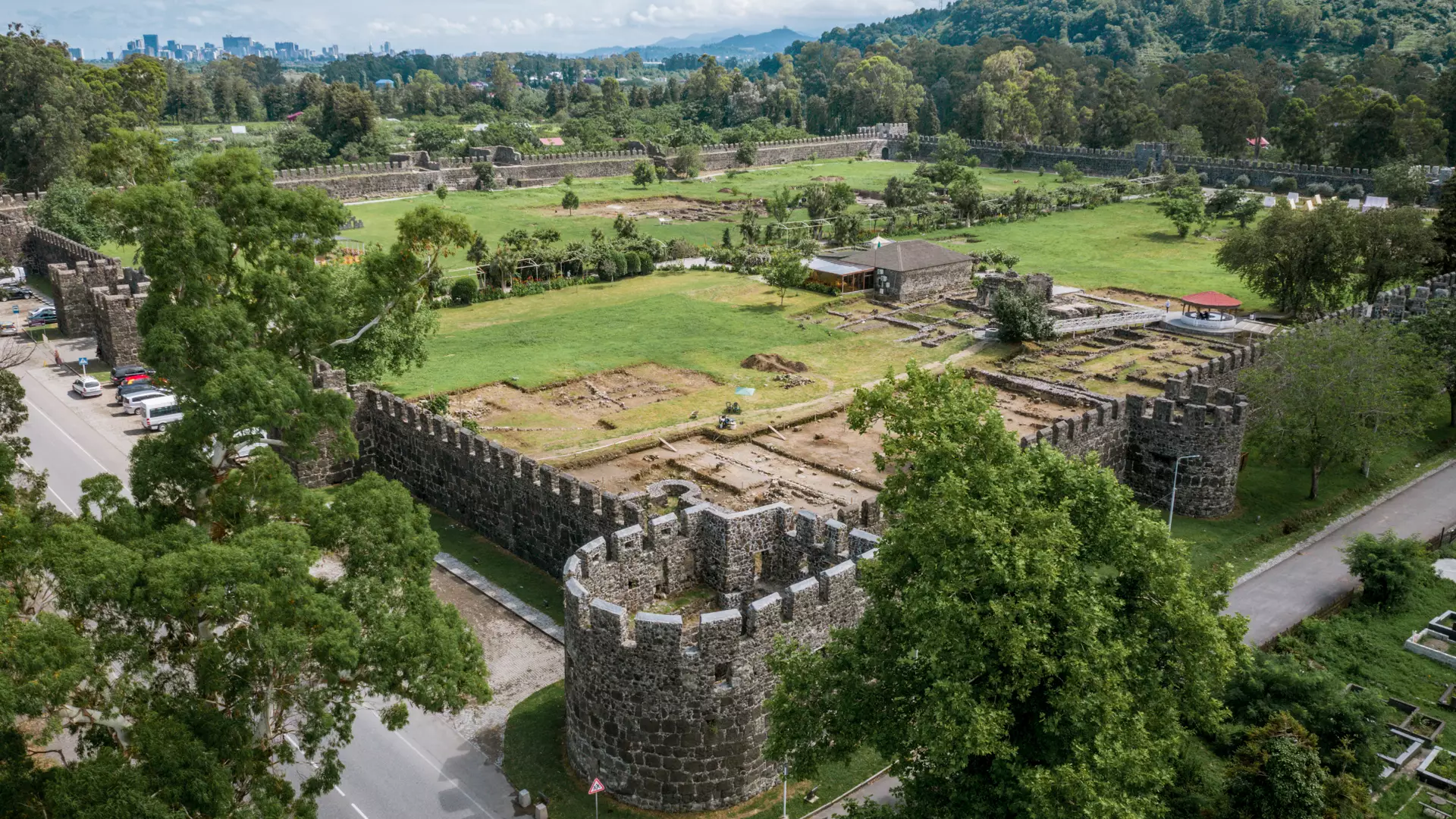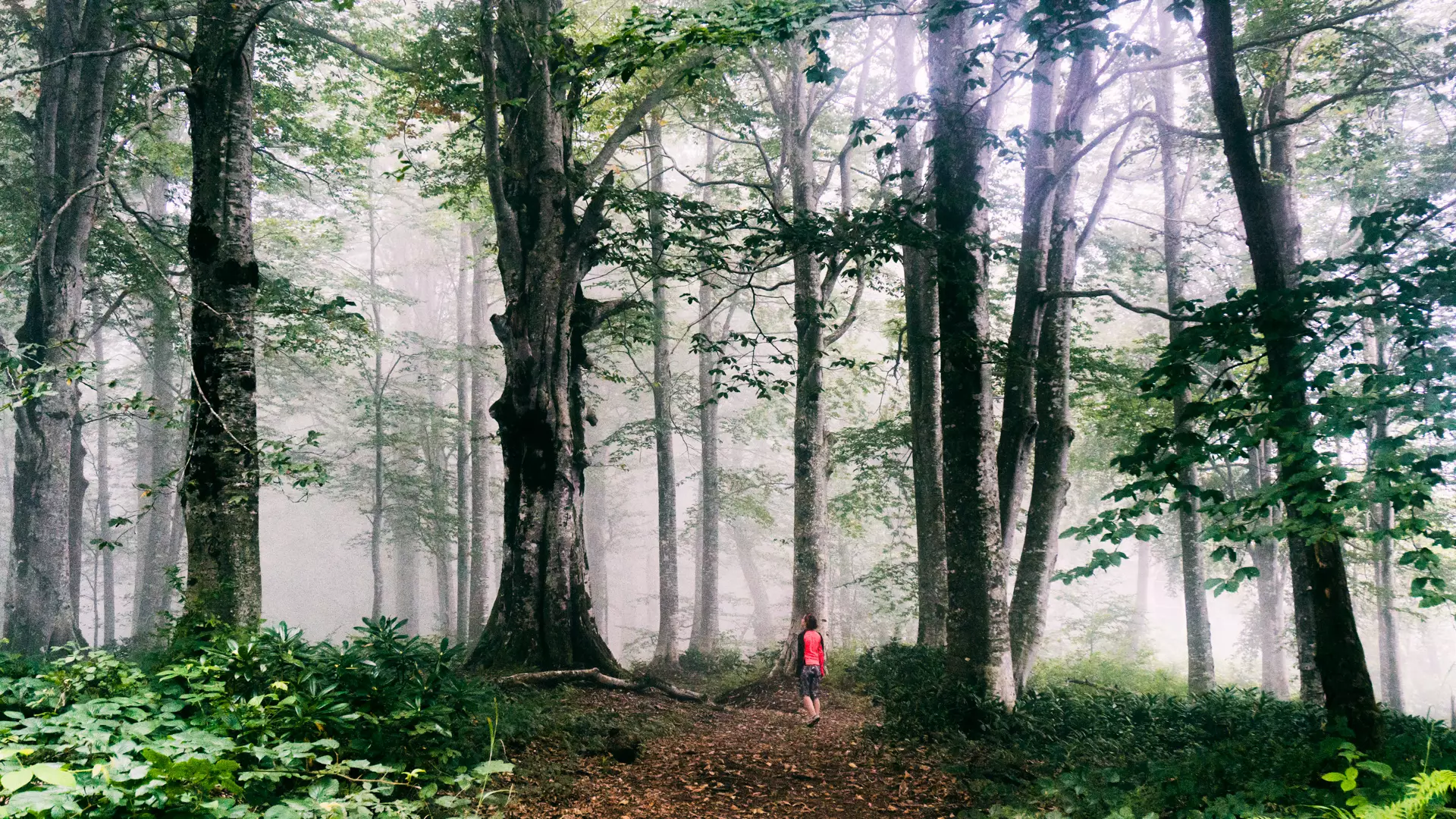Ajara
Batumi
Sunny beaches, a botanical garden, the dolphinarium, dancing fountains, the Alphabetic Tower, the Panoramic Ferris Wheel, the moving sculpture of Ali and Nino, fascinating museums, Christian churches next to a mosque and a synagogue – all of this and more can be found in Batumi, the magnificent coastal city of Georgia.
One of Georgia’s most popular tourist destinations, Batumi is also your gateway to exploring the rest of the beautiful, historic Ajara.
Kobuleti, Gonio, Kvariati, Sarpi
For those looking to escape the hustle and bustle of city life and enjoy some time relaxing amidst nature’s splendour, Ajara has plenty of options. In the villages of Gonio, Kvariati, and Sarpi, you can enjoy stunning views of both the mountains and the sea, swim in crystal clear waters, work on your tan, and get your head straight from the comfort of a beachfront bungalow.
In Kobuleti Municipality, you’ll also find cascading waterfalls, shimmering lakes, and unspoiled nature preserves just waiting to be explored.
The seaside resorts of Kobuleti, Bobokvati, Chakvi, and Tsikhisdziri are especially popular.
Khulo, Keda
Ajara is also home to some of the highest mountains in Europe. Khulo and Keda are some of the oldest of Ajara’s mountain settlements, with the nearby Goderdzi and Beshumi resorts being popular destinations for mountain retreats.
Historical Monuments
Ajara has been inhabited since at least the Neolithic Period and became a centre for metallurgy during the Bronze Age. As a result, Ajara is known for its ancient and medieval monuments, including stone bridges built over the many rivers that crisscross the region. Among the most notable of these are Gonio Fortress, Petra Fortress, the 10th-12th-century fortress of Khikhani, and Skhalta Monastery.
The Culinary Climate
Ajara has a subtropical climate, meaning that it is hot in the summer, and the winters are long and cold. Much of Ajara’s identity is expressed through its cuisine. Ajarians once ate their high-calorie foods – borano, sinori, kaymagi, malakhto, iakhni, and achma – during the winter to keep their health up. These foods would last for a long time, so they would not spoil when people were stuck in their homes because of the snow. Of course, these decadent foods are now available year-round!
The boat-shaped Ajarian khachapuri is one of Georgia’s most recognisable foods, and it shows the fishing history of the area. Similarly, coffee on sand and baklava are expressions of Ajara’s enduring affair with the sun, seashore, and love.
And, of course, there is Ajarian wine! The famous wines Tsolikouri and Chkhaveri are made here, and local wineries are attracting visitors from all around the world.
Diverse Vacations in Ajara
Vacationing in Ajara doesn’t just mean relaxation at the sea or in the mountains. Lovers of eco-tourism will find plenty to love about the region through its many national parks and nature preserves, including the Kintrishi and Kobuleti Protected Areas, Machakhela and Mtirala National Park, and the Batumi Botanical Gardens.
Visitors to Ajara can participate in rafting, hiking, birdwatching, ziplining, scuba diving, horseback riding, canyoning, and camping.
Ajara really does have it all.
Cookie Policy

.webp)


.webp)
